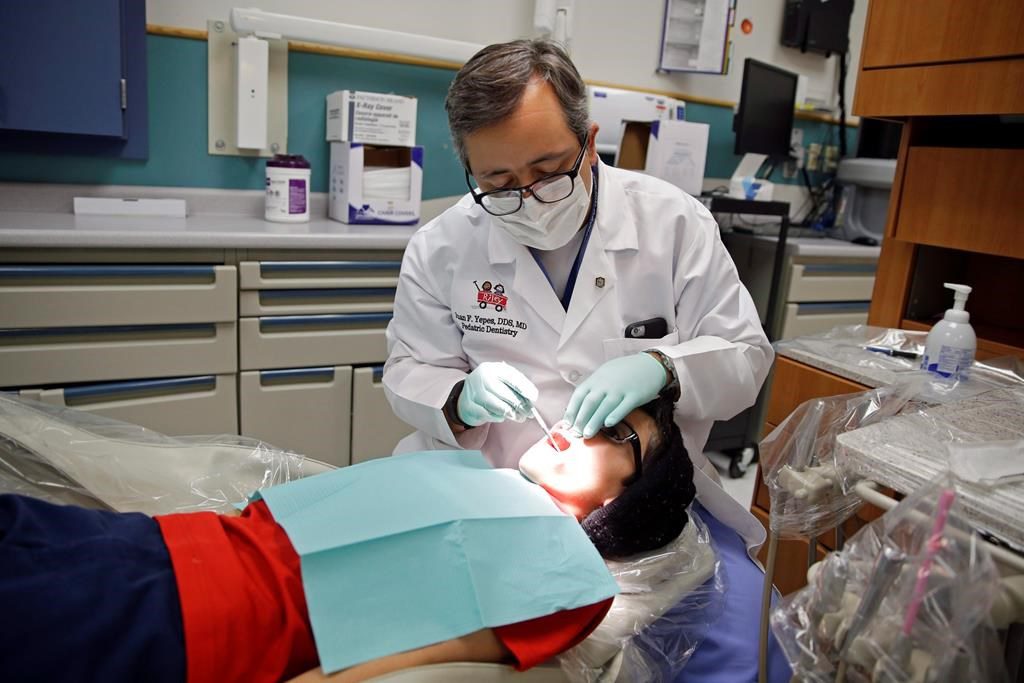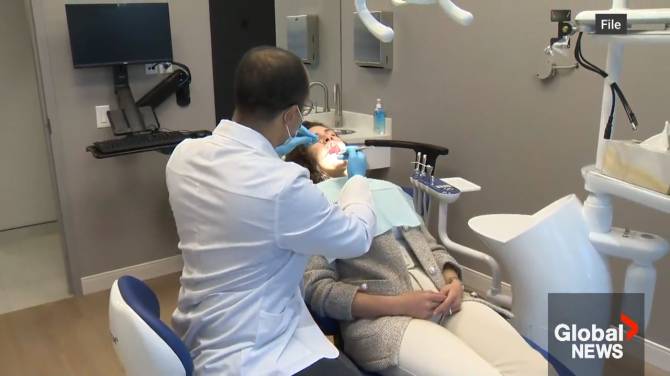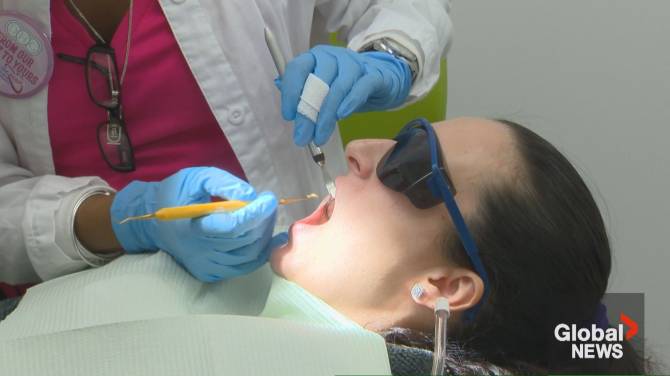The start date for the federal government’s affordable dental care plan is just over a month away. Some providers in Alberta are questioning the details of the program and whether it’s worth choosing to be a part of it.
Last December, Ottawa introduced the Canadian Dental Care Plan (CDCP) for low and middle-income individuals without private insurance.
The plan came from the Liberal and NDP confidence-and-supply agreement in 2022.
To qualify for the plan, Canadians must not already have access to dental insurance, have an annual adjusted family net income of under $90,000, be a Canadian resident for tax purposes, and have filed a tax return from the previous year.
The government clarifies that adjusted net income refers to a family’s net income plus any universal child care benefit (UCCB) and registered disability savings plan (RDSP) amounts repaid, minus any UCCB and RDSP income received.
“To be honest, I don’t know if this program is going to improve access to care,” said Alberta Dental Association (ADA) president Dr. Jenny Doerksen.
“I feel like it’s going to create more barriers between the patients and the providers. This program is asking the dentists to sign a contract with unknown terms and conditions.”
Seniors are the first ones eligible for the program.
They will be able to access oral health care treatment through the CDCP as early as May, with applications open since December for those 87 and above, and to additional age groups in the months since. As of this month, those 70 and older are eligible to apply, with those 65 to 69 able to sign up come May.
Doerksen states that one of the biggest misunderstandings about the plan is the cost.
“Some people might be thinking that this is a free dental program and will be surprised when there’s extra costs or out-of-pocket expenses. There’s a bit of hesitation of the unknown,” she said.
Instead, the dental program will reimburse a percentage of dental procedures, but some people covered under the plan may have a co-payment. This is the percentage of the dental plan that is not covered by the federal government, which people will have to pay out of pocket.
Families with net incomes between $70,000 and $79,000 will have a 40% co-payment. And those between $80,000 and $89,000 will have a 60% co-payment.
Doerksen believes that when the plan is up and running, it could lead to more red tape for clinics and administrative burden.
The ADA says since the plan is voluntary, not all dentists may participate, making it harder for patients to find care.
“We are very concerned about patients autonomy. Their freedom to choose their provider, they have built their relationship, that the provider knows your background, your culture, your oral health. We are just more concerned about how this program is impacting the relationship between the patients and the providers,” Doerksen said.
Doerksen notes that the Alberta Dental Association and other provincial groups in Alberta and across the country were not consulted until a month before the plan was revealed.
However, Health Canada told Global News that it has met with the organizations since 2022.
“They know the details of the plan and have been consulted on how to work with them for success, along with similar consultations with other oral health professionals, regulatory bodies, and advocacy associations. These efforts include setting up working groups on fee setting, addressing administrative burden, and program communications. Our work together has been helpful, leading to positive changes in crafting and streamlining claims and payment processing agreement, making filing claims easy like private insurance plans, and ensuring claims are paid within 2 business days,” the statement reads.
However, not all dentists are hesitant about signing up. Smiles Dental director Amanda Peterson believes it could be a good initiative to get more patients in chairs.
“We’re really excited about it. It’ll provide opportunities for uninsured patients to have some type of coverage. I think it will be really helpful, especially for young families. I think it will be a good opportunity for patients to get a lot of their basic treatment done for checkups and cleanings,” Peterson said.
According to Health Canada, over 1.6 million Canadians have registered for the program.
— With files from Global News’ Katie Dangerfield and Sean Previl





